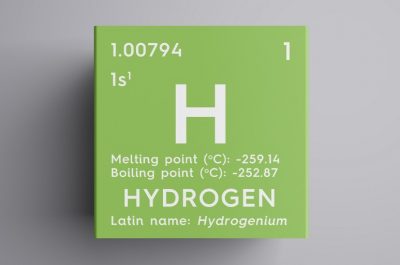Energy sector getting set for summer
Summer in Australia isn’t all snags, sunscreen and surf. The heat over the summer months can be relentless and with days often over 40 degrees, Australians can’t be blamed for hunkering down, cranking up the aircon and staying indoors. This spike in energy demand can put significant strain on the energy grid. As the weather heats up, we take a look at how the energy sector prepares for summer.
What happens during a heatwave?
Heatwaves are three or more consecutive days of unusually high temperatures. These extended hot weather events can cause significant demand on the electricity system. This demand has increased with the growing use of air conditioners in homes and businesses.
The occurrence and severity of heatwaves can be unpredictable, but networks, generators, regulators, operators, governments and emergency services all plan for these extreme weather events. The primary concern of all these bodies is to ensure communities are kept safe, the power stays on and if it goes out, that it is restored as quickly as possible.
How does the energy sector prepare for heatwaves and bushfires?
Networks continually maintain their infrastructure to ensure it is ready for summer.
Heat can impair the operation of infrastructure like generators and transmission lines and bushfires can lead to outages on major transmission lines and have the potential to impact solar output if there is extensive smoke haze.
Electricity networks have specific operational plans developed in advance of the hottest days that include infrastructure upgrades and maintaining vegetation, so it doesn’t interfere with the electricity grid.
Networks also have emergency crews ready to respond if equipment fails or if there is an emergency or natural disaster, like a bushfire or lightning strike.
A challenge for the sector leading into this summer has been to ensure these critical works can take place despite the impacts of COVID-19. To assist, networks are increasingly employing smart technology to be their eyes and ears across the grid.
Generators and network operators have worked closely with AEMO to ensure the availability of plant and infrastructure coming into the peak demand period and mitigate any impacts from COVID-19 on maintenance and upgrade work.
AEMO also expects an increase of up to 3400MW of new grid-scale wind and solar capacity to be available this summer and about 2000MW of new distributed solar on rooftops.
Major investments continued to be made by key asset owners to ensure availability of supply.
Here are just a few examples of what generators have done to get ready for summer.
- Origin completed annual summer readiness preparations across all power stations in its portfolio and additionally performed pre-summer works at its Eraring, Darling Downs, Mortlake, Quarantine and Uranquinty power stations.
- Alinta Energy, owners of Loy Yang B in Victoria’s Latrobe Valley, has invested $80 million to upgrade the plant’s Unit 1, which follows a similar upgrade to Unit 2 last year.
- Engie successfully completed an outage in early November at its Pelican Point plant in South Australia, and undertook significant work at its Synergen gas peaker sites.
- EnergyAustralia has invested more than $200 million in its assets to get them ready for summer, with major maintenance programs conducted at the Yallourn, Tallawarra and Mt Piper power stations.
- Stanwell successfully returned Tarong Power Station Unit 2 to service on 30 October 2020 from a planned overhaul with the unit operating unrestricted from 2 November 2020 following testing. Additional overhaul work on Tarong North Power Station is being undertaken and is expected to be ready for the summer peak.
Do renewables help or hinder?
While the increased reliance on air conditioning has caused a rise in peak demand over the past decades, in recent years this has been somewhat offset by the increased uptake of household solar and batteries.
The increased deployment of rooftop solar PV helps reduce demand during peak times but then shifts the maximum peak event to later in the day once the sun goes down and solar panels stop doing their work.
As households start to include batteries in their personal energy mix there is an opportunity for this delayed peak to even out as use of stored energy can reduce the strain on the grid.
Why did my power just go out?
If your power has gone out it may be for one of three reasons.
- Localised outages: these can be for any number of factors – i.e. a tree branch on a line, a truck hitting a pole, or equipment failure Some may be due to heat and high demand. These are generally communicated by local network operators to customers via SMS, websites, twitter and other social media. They can involve a handful or a few thousand households depending on the cause, and supply is restored (as quickly as possible) once repairs take place.
- Power system disturbance: When a major event has disturbed the security of the power system, customers may be interrupted over a wide area. There are many possible causes, but most frequently it is caused by a weather event which creates a sudden interruption to critical transmission lines. For example, on 4 January 2020 transmission lines in southern NSW tripped due to bushfires.
- Involuntary load shedding: in the unlikely event there is still not enough supply to meet demand, the Australian Energy Market Operator (AEMO) will order sections of the grid to be switched off until increased supply can be restored or demand reduces. These are known as rolling blackouts, as different parts of the grid take turns being without power.
What can I do to prepare this summer?
We tend to take our utility services for granted – you’d be forgiven for not giving much thought to electricity until it’s not there.
In the event of an outage or an emergency, energy businesses and network providers will seek to update their customers through SMS, or via social media websites like Facebook or Twitter. You can stay informed by following your network on social media.
Life support customers should register their details with their local energy network and their electricity retailer who issues their bill. If you rely on a continuous power supply for life support equipment, you are urged to have a back-up plan in case there are any unplanned power outages.
In some situations, governments or regulators may ask households to minimise energy usage to help reduce peak demand, while many retailers offer bill credits for households to reduce their energy use. Simple measures such as increasing the cooling temperature on your air conditioner by a couple of degrees can help everyone and save on your power bill.
A copy of an Energy Networks Australia and Australian Energy Council Fact Sheet on energy supply and heatwaves can be found here.


